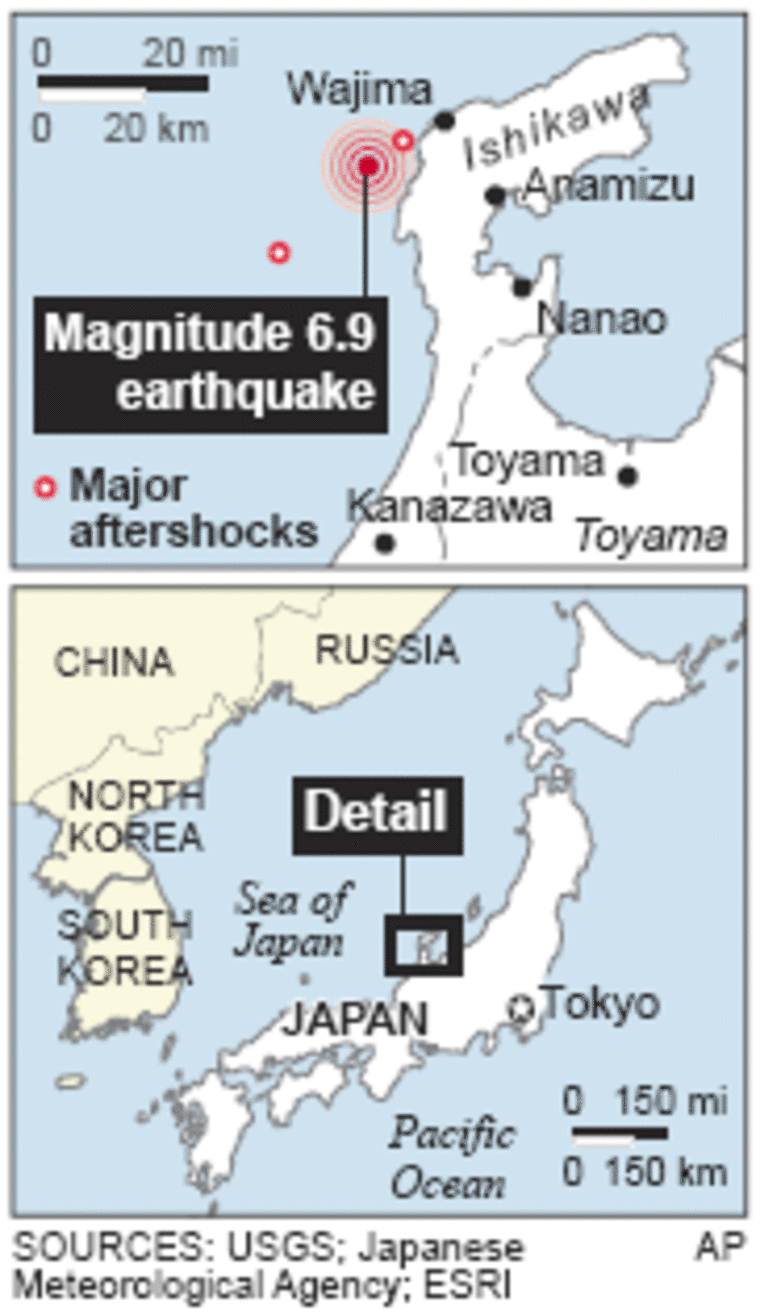Aftershocks jolted the west coast of central Japan on Monday, keeping residents on edge a day after a strong earthquake killed one person, injured nearly 200 and flattened homes.
Sunday morning’s 6.9 magnitude quake, which struck the Noto peninsula in Ishikawa prefecture, about 190 miles west of Tokyo, destroyed houses, buckled roads, triggered landslides and cut off water and electricity supplies to thousands of homes.
A 5.3 magnitude tremor, one of more than 175 aftershocks, struck early on Monday, and a 4.8 magnitude quake jolted the area in midafternoon, Japan’s Meteorological Agency said.
Officials warned that more could occur.
About 2,600 people spent the night in evacuation shelters and many other residents slept in their cars.
“The aftershocks are scary, so I spent last night in an evacuation center,” said 83-year-old Kiyo Kawaguchi, surveying the damage to her home in the rural city of Wajima, one of the hardest hit areas.
Prime Minister Shinzo Abe told a parliamentary panel in Tokyo that 68 houses, many of them old wooden structures with heavy tile roofs, had been destroyed and another 164 badly damaged.

The government’s disaster agency put the total number of damaged houses at 564 and public broadcaster NHK said more than 10,000 households lacked running water.
An emergency relief team of firefighters that had been searching the rubble of collapsed houses confirmed that no one was trapped, an Ishikawa prefecture official said.
Shogoro Hashimura, 81, hid under a table at the office of his sawmill in Wajima when Sunday’s quake struck.
“When I looked outside, my truck was trapped under the rubble and woodchips and lumber were strewn all over,” Hashimura said.
“I want to do something about my collapsed mill, but I can’t until the aftershocks stop,” he said.
Early warning
The plight of Wajima’s elderly highlights the vulnerability of Japan’s aging population when disasters strike.
“I’m worried because there aren’t many young people in this neighborhood and I don’t know how I’ll cope with this mess,” said 76-year-old Kazuko Kakuda, who had returned from an evacuation center with her husband Tsunetaro, 77, to try to clean up the toppled furniture and broken dishes in their home.
The Meteorological Agency, using an early warning system that detects smaller tremors before a main quake hits, issued a tsunami alert on Sunday about 100 seconds after the quake, about two minutes faster than previously.
The tsunami warning was lifted the same day after small waves hit some areas.
The agency was also able to send an “emergency earthquake flash” to monitors about 30 miles from the focus about five seconds before the strong quake rattled the region.
But hard-hit Wajima failed to receive the warning before the tremor struck because it was too close to the focus.
The agency plans to use the system, in place for tsunami warnings to a limited number of subscribers since October, for earthquake announcements starting later this year.
Electricity was restored to most homes after outages on Sunday affected around 160,000 households, Noto airport on the peninsula reopened after cracks on the runway were repaired, and train services were back to normal, officials and media said.
Earthquakes are common in Japan, which accounts for about 20 percent of the world’s earthquakes of magnitude 6 or greater.